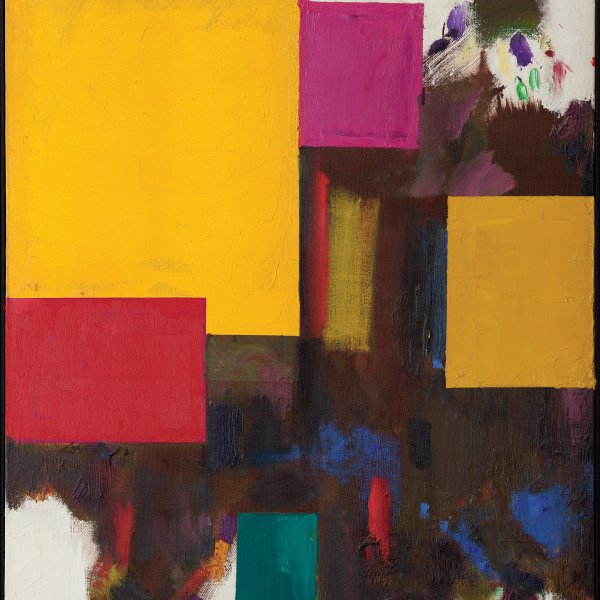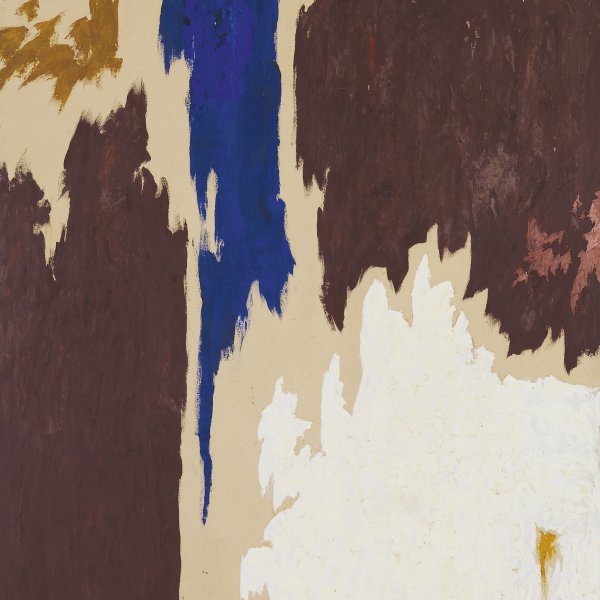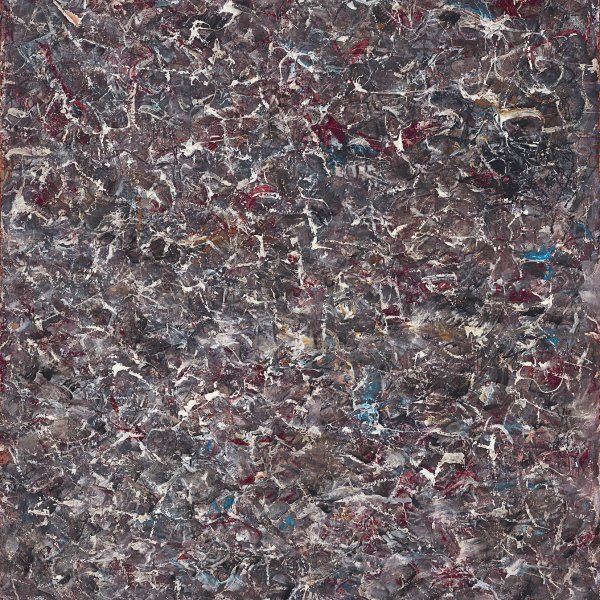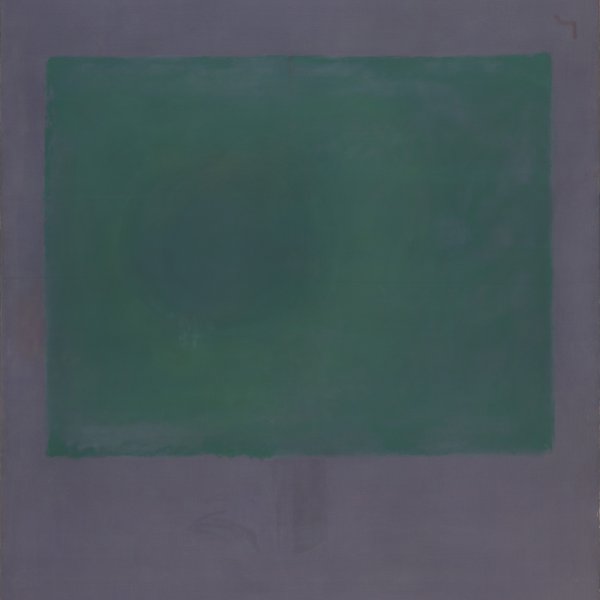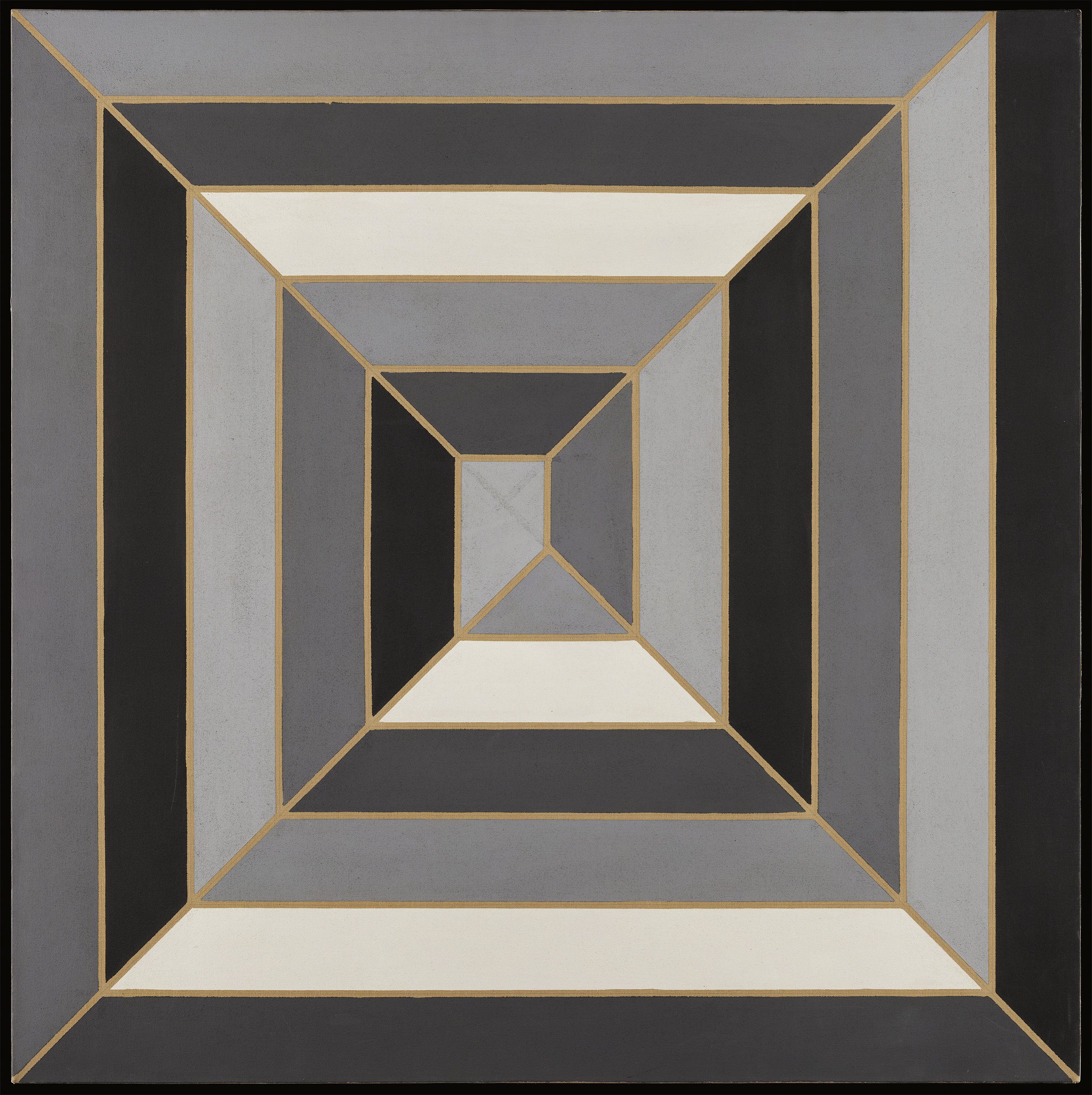Untitled
1966
Acrylic on canvas.
91.5 x 91.5 cm
Museo Nacional Thyssen-Bornemisza, Madrid
Inv. no.
765
(1983.31
)
Room 48
Level 1
Permanent Collection
Frank Stella made himself known at the Sixteen Americans exhibition organised by The Museum of Modern Art in New York in 1959 with his Black Paintings. These geometrically structured works far removed from gestural abstraction had been executed under the influence of Jasper Johns’s Flags — paintings totally devoid of any spatial dissociation between form and content, which had been first shown at Leo Castelli’s gallery in 1958. However, as his greatest champion the critic Michael Fried stated, the new forms in Stella’s paintings structured images deductively, internally, with no need for “found” images such as Johns’s flags.
The present painting in the Thyssen-Bornemisza collection was executed in 1966, when Stella’s abstract language was verging on minimalist experimentation. In formal terms the scheme of the composition is very simple: a series of nested squares that cover the entire surface of the canvas and, through the changes in colour on each of their sides, create a spiral movement that could stretch beyond the limits of the painting. Stella replaces the exaggerated gestures of the Abstract Expressionists with a carefully studied geometrical network of parallel lines arranged with certain symmetry. However, the methodical nature of his painting does not stem from strict geometrical principles but from an intuitive geometry, in order to ensure that the viewer grasps it at first glance and is accordingly moved by it. “The worthwhile qualities of a painting are always going to be both visual and emotional, ” he stated, “and it’s got to be a convincing emotional experience. Otherwise it will not be a good — not to say, great — painting.”
Stella was equally concerned with underlining the presence of the painting as a physical object and therefore believed that the viewer ought to be able to see how it was put together: “There are two problems in painting. One is to find out what painting is and the other is to find out how to make a painting.” In the present painting, in order to stress the importance of the work as an object rather than as an illusion, he employs very matte acrylic paint. This object-like quality is further emphasised by the use of a very thick stretcher that causes the work to stand out. The artist stated in this connection that “my painting is based on the fact that only what you can see there is there. It is really an object.”
Paloma Alarcó
The present painting in the Thyssen-Bornemisza collection was executed in 1966, when Stella’s abstract language was verging on minimalist experimentation. In formal terms the scheme of the composition is very simple: a series of nested squares that cover the entire surface of the canvas and, through the changes in colour on each of their sides, create a spiral movement that could stretch beyond the limits of the painting. Stella replaces the exaggerated gestures of the Abstract Expressionists with a carefully studied geometrical network of parallel lines arranged with certain symmetry. However, the methodical nature of his painting does not stem from strict geometrical principles but from an intuitive geometry, in order to ensure that the viewer grasps it at first glance and is accordingly moved by it. “The worthwhile qualities of a painting are always going to be both visual and emotional, ” he stated, “and it’s got to be a convincing emotional experience. Otherwise it will not be a good — not to say, great — painting.”
Stella was equally concerned with underlining the presence of the painting as a physical object and therefore believed that the viewer ought to be able to see how it was put together: “There are two problems in painting. One is to find out what painting is and the other is to find out how to make a painting.” In the present painting, in order to stress the importance of the work as an object rather than as an illusion, he employs very matte acrylic paint. This object-like quality is further emphasised by the use of a very thick stretcher that causes the work to stand out. The artist stated in this connection that “my painting is based on the fact that only what you can see there is there. It is really an object.”
Paloma Alarcó





